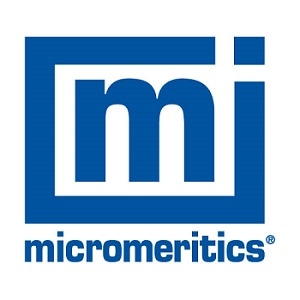New additions to Version 3.0 of the MicroActive software by Micromeritics lets users paste HPVA II data directly into MicroActive sample files. This is very useful for the calculation of isosteric heats of adsorption from isotherms drawn at different temperatures, or for the fitting of data to a different isotherm model.
Steps to Paste HPVA II Data into MicroActive and Calculate Heats of Adsorption
This article provides instructions on the pasting of HPVA II data into MicroActive and how to use this data to calculate heats of adsorption.
- The HPBA II Excel macro Version 22.0.9 will automatically place data in columns that have the correct headers for direct pasting into MicroActive. This function can be activated by choosing ‘Edit’ in the ‘HPVA Options’ menu. Tick the ‘Print MicroActive Data’ and then click the ‘OK’ button
.jpg)
- The MicroActive data is located at the bottom of the isotherm report spreadsheet. Two columns of data should be copied, these are ‘Absolute Pressure (mbar)’ and either ‘Quantity Adsorbed (mmol/g)’ or ‘Quantity Adsorbed (cm3/g STP)’
- MicroActive should be opened and a new sample file created by selecting ‘Open’ in the ‘File’ menu. A unique file name should be written using the extension ‘.SMP’ and ‘Open’ should then be clicked. When asked if a new file should be created, click the ‘Yes’ button.
- The ‘Advanced’ tab should be opened using the drop down menu found at the bottom of the window for the SMP file. The ‘Sample Description’ tab should be selected and, once opened, the ‘Type of Data’ value should be set to ‘Manually Entered’
.jpg)
- The drop down menu, found at the bottom of the window of the SMP file, will now present new options. ‘Isotherm’ should be selected, which will open a blank graph
- Select ‘po and T…’ and input the temperature of the analysis. The saturation pressure for condensable adsorbates can be entered when users need to plot an isotherm as a function of the relative pressure. The saturation pressure should be ignored, and the isotherm data plotted as a function of absolute pressure, in instances where the adsorbate is in a supercritical state. Click the ‘OK’ button once completed to save these changes
.jpg)
- ‘Relative Pressure’ or ‘Absolute Pressure’ should be selected to determine how the data will be plotted
- Click on the ‘Paste’ button. This will result in the automatic plotting of the isotherm data on a logarithmic scale and on an absolute scale
.jpg)
.jpg)
- Click “Save” in the bottom left corner of the SMP file window to update progress
- Repeat steps 2-9 for additional isotherms at different temperatures. At least two temperature isotherms are required for isosteric heats of adsorption calculations
.jpg)
- From the “Reports” menu choose “Heats of Adsorption...”
- Click “Add Samples...” and choose the sample files previously created
- Heat of Adsorption will be plotted as a function of Quantity Adsorbed per gram. Click “Edit Quantities...” to insert a range of quantities adsorbed. For best results, the entered adsorption range should be covered by every isotherm
.jpg)

This information has been sourced, reviewed and adapted from materials provided by Micromeritics Instrument Corporation.
For more information on this source, please visit Micromeritics Instrument Corporation.